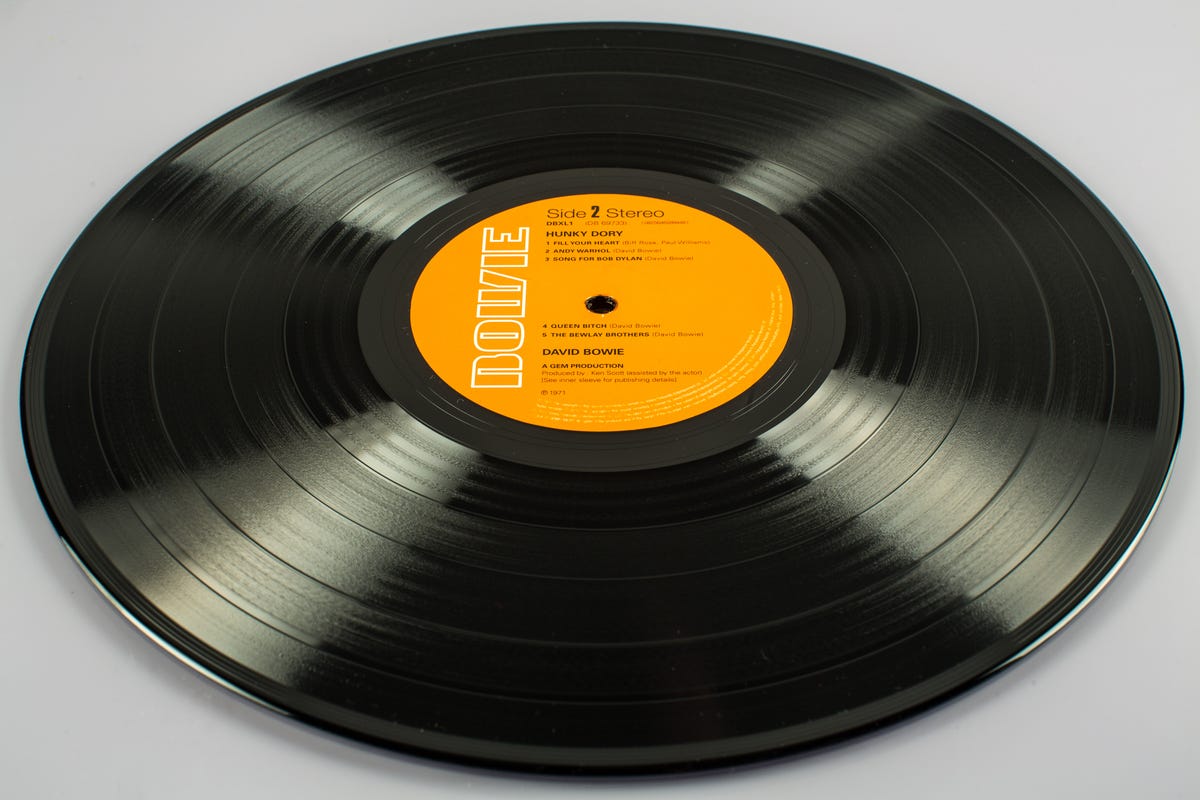This is how a vinyl record is made
Vinyl records are making a big scratch again. CNET photographer and resident music aficionado Josh Miller walks you through the steps it takes to make one.

Ever wonder how a vinyl record gets made? We went to United Record Pressing in Nashville, Tennessee (with a quick stop in Oakland, California), to see the process in action.
Even though vinyl is a physical medium, the sound often starts as a digital or analog recording captured to a hard drive.
Here, Tim Bluhm of The Mother Hips records a song from his upcoming solo album at Coyote Hearing Studio in Oakland, California.
After the recording is done, the songs go to a mastering studio to create a master recording. Here, Andrew Mendelson, chief mastering engineer of Georgetown Masters in Nashville evaluates the mix. The music is optimized to sound its best on vinyl.
Next, grooves are cut into what's called a master lacquer disc. These grooves represent the sound of the recorded music. When a record player needle runs over these grooves, the needle moves up and down creating an electric current which when amplified and sent through a speaker, produces the music you're accustomed to hearing.
Cutting the lacquer is a hands-on process. Here, technicians monitor a record lathe (the machine that does the cutting) while it cuts a master lacquer.
Once the grooves are cut into the disc, it becomes the master version from which most copies of the record will be made.
After the master lacquer is cut, an engraver must inscribe a code onto it. It's kind of like a serial number used to keep track of the master.
So how exactly are copies made? The master lacquer is first sprayed with silver and then dipped into a nickel bath.
The nickel adheres to the disc in a process known as electroplating.
Electroplating creates what's known as a metal master.
The metal master is pulled apart, showing how each side is a mirror image of the other. One side has grooves, while the other has ridges. The side with the ridges is what's known as a metal stamper.
The stamper's bodies need to be refined a bit to fit into the record-pressing machine.
The stamper is then inspected further with microscopic precision.
But wait! Before we get to the actual record pressing, we need materials. These black vinyl pellets will be superheated and formed into a hockey puck-shaped gooey "biscuit."
Depending on what color the artist wants the finished record to be, different color vinyl pellets can be used.
The stamper is mounted into the press and a fresh biscuit is placed on top.
The super-hot vinyl (white in this case) is flattened while the stamper's ridges press into it, creating the grooves of the record.
A stack of freshly pressed white vinyl records. Some people believe color vinyl records are noisier than black vinyl records due to the lack of polycarbonate material.
Before pressing multiple hundreds or even thousands of records, you want to make sure the record is perfect from both a physical and audio perspective. This first pressing is actually only a test pressing. The pressing company and artist listen to the record looking for problems that may have cropped up during the press.
When the record gets the all-clear, mass production can begin. Inspectors visually evaluate every record for physical flaws that could ruin the sound quality. If all looks well, the finished records will rest between cooling plates before being packaged.
The records are then placed into their outer sleeves, shrink-wrapped, stickered and finally boxed.
From here, they'll ship to stores around the world.
Every year in mid-April, record collectors gather to celebrate independent record store culture on Record Store Day.
Some records are pressed specifically for Record Store Day and are only made available to stores participating in the event.
Most people have no idea about what it takes for a record to get to this point, but you're no longer one of them, are you?
Vinyl records are more than just a music medium. They're beautiful to look at and hold. The large-format packaging is also a great palette for artists, designers and/or photographers to create art for the band and project. Here's a limited-edition watermelon vinyl record held up to the light.

